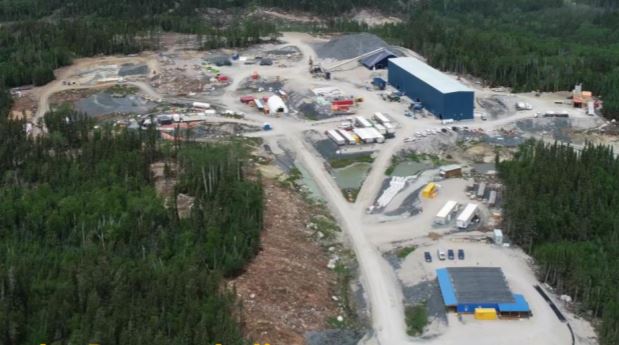Harte Gold shares slip; net revenue up 50%

Harte Gold's Sugar Zone Mine in northern Ontario. Source: Harte Gold Corp.
Harte Gold Corp. [HRT-TSX; HRTFF-OTC; H4O-FSE] shares fell on Monday November 4 after the company reported lower than expected third quarter gold production at its Sugar Zone Mine 80 km east of the Hemlo Gold Camp in northern Ontario.
Gold production in the first nine months of 2019 was 19,138 ounces, the company said in a press release that was issued after the close of trading on November 1, 2019. Due to issues around mine development and stope availability in the third quarter, the company said it expects fourth quarter production to be in the range of 5,000 to 7,000 ounces.
As a result, full year 2019 production has been adjusted downwards from 39,000 ounces to 24,000 to 26,000 ounces.
While operating costs were stabilized in the third quarter as a result of lower production for the year and higher costs in the first half, annual all-in-sustaining-cost (AISC) guidance has also been modified and is expected to be in the range of US$2,000 to US$2,200 per ounce. That compares to an earlier forecast of US$1,300 to US$1,350 an ounce.
The value of Harte Gold shares closed down 20% or $0.045 to 18 cents on heavy volume.
Harte is Ontario’s newest gold producer through its wholly-owned Sugar Zone mine. The project is estimated to contain a NI 43-101 compliant mineral resource of 1.1 million ounces of contained gold, and an inferred resource of 558,000 ounces of contained gold.
A feasibility study was completed on the Sugar Zone mine in February, 2019, which estimated total reserves at 890,000 ounces of gold. Exploration continues on the Sugar Zone, which covers 79,335 hectares of a significant greenstone belt.
In the second quarter ended June 30, 2019, Harte said gold production increased by 42% from the previous quarter to 7,754 ounces. The average head grade of the mined ore was 6.01 g/t gold. Net revenue in the second quarter was $11.8 million, marking a 50% increase in comparison to the previous quarter.
Mining operations are currently expected to run for 12 years and will support further resource expansion drilling in the immediate vicinity of the mine and the ramp up of property-wide exploration programs.
In the November 1 news release, Harte Gold said it is mining from areas developed at the Sugar Zone North and South ramps. It said mill feed grade decreased due to a shortage of development of higher grade stoping areas, which resulted in a larger contribution of lower grade development ore as the primary mill feed.
Development delays and paste plant (for backfilling) start-up issues also affected overall stope sequencing, which resulted in the company mining off plan.
Meanwhile, Harte said it has taken a number of steps to address these issues.
Mine performance was addressed with the mining contractor and necessary actions are being taken to ensure adequate staffing and broader recruitment efforts. A paste plant is expected to be operational by the end of the year.
However, the revised guidance is not good news for investors who helped the company raise $6 million from a bought deal offering of 20 million flow-through common shares priced at 30 cents per share.
In addition to the Sugar Zone property, Harte Gold also holds the Stoughton Abitibi property on the Destor-Porcupine Fault Zone, east of Timmins, Ontario. That property is adjacent to the Holloway Gold Mine.
Harte acquired the Sugar Zone property in May 2010 from Corona Gold Corp. [CRG-TSX], a company headed by mine financier Ned Goodman. At the time, Corona received cash payments, plus shares equal to a 9.9% stake in Harte.
Some of the exploration since then has focused on Hemlo-style mineralization to the east of the Sugar Zone. This is a reference to the famous Hemlo gold discoveries of the early 1980s, which were rich enough to support three mines – Williams, Golden Giant, and David Bell.
